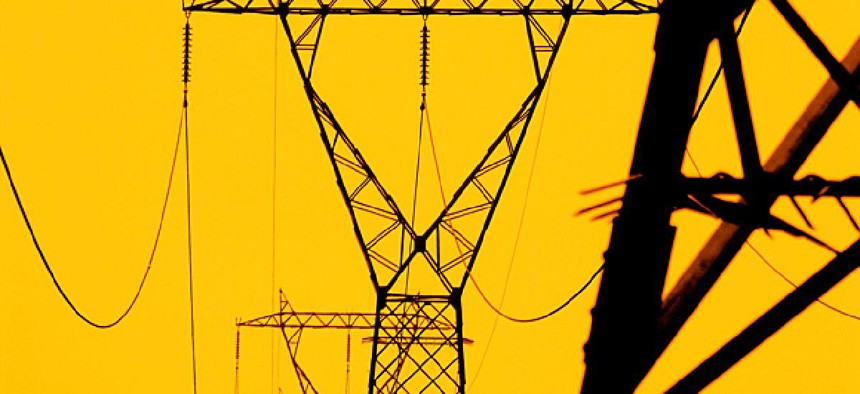Electromagnetic pulse could knock out U.S. power grid

Thinkstock
EMPs triggered by weapon or space weather threaten electronics and communications, officials warn.
U.S. power grids and other civilian infrastructure are not prepared for electromagnetic pulses that could result from weapons or violent space weather, according to testimony at a congressional subcommittee hearing Wednesday.
Panelists at the House Homeland Security Subcommittee on Cybersecurity, Infrastructure Protection and Security Technologies, told Chairman Dan Lungren R-Calif., that there were serious flaws in the nation’s infrastructure that could allow for EMP events to shut down power and communications for extended periods of time.
“Our civilian grid, which the Defense Department relies upon for 99 percent of its electricity needs, is vulnerable to these kinds of dangers,” Rep. Trent Franks, R-Ariz., testified during the hearing. Franks, one of the leaders of the Congressional EMP Caucus, sponsored legislation in 2011 to protect U.S. infrastructure in the event of an attack by an EMP weapon.
Michael Aimone, a director of business enterprise integration at Defense, said the Pentagon had pursued a “two-track approach” to mitigate the impact an EMP attack could have on Defense facilities. He said his plan relied on both in-house capabilities to maintain power and electronics and a means to communicate and coordinate with outside partners.
“DoD recently adopted an explicit mission assurance strategy, which is focused on ensuring operational continuity in an all-hazard threat environment,” Aimone said.
EMP disruptions and attacks can be triggered by various events, including high-altitude or low-altitude nuclear weapons detonations, locally based radio frequency weapons, and solar weather. One of the largest impacts from an EMP-based disruption was in Quebec in 1989, when nearly 6 million people lost power because of a geomagnetic storm.
Brandon Wales, of the Homeland Security Department’s National Protection and Programs Directorate, said DHS was working with federal agencies on contingency plans for an EMP event. He said Federal Emergency Management Agency was establishing lines of communication with key agencies in case an EMP event occurs, and that Homeland Security Secretary Janet Napolitano had commissioned a report in 2011 to study the impact of space-based EMP attacks.
“DHS has pursued a deeper understanding of the EMP threat, as well as its potential impacts, effective mitigation strategies, and a greater level of public awareness and readiness in cooperation with other federal agencies and private equipment and system owners and operators through various communications channels,” Wales said.
Common standards for power grid equipment are a major issue according to Joseph McClelland, director of the Office of Electric Reliability at the Federal Energy Regulatory Commission. He said current standards to protect infrastructure and equipment do not address the many levels within the power grid and should be updated.
“Protecting the electric generation, transmission and distribution systems from severe damage due to an EMP-related event would involve vulnerability assessments at every level of electric infrastructure,” McClelland said.
Chris Beck, president of the Electric Infrastructure Security Council, said the cost of protecting key infrastructure from EMP attacks was small, and added the bigger problem was getting the word out about the issue.
“The primary needs seem to be for education to increase awareness and willingness to address the problem, and for coordination to address the complex government and corporate administrative structures of even the most critical infrastructures,” Beck said.
Public interest in EMPs piqued during the Republican primaries, when former Speaker of the House Newt Gingrich explained the threat of the EMP weapons during his stump speeches. He issued a statement following a recent severe storm in the Washington area, saying the power outages were just a taste of what the scenario following EMP weapon would be like.






